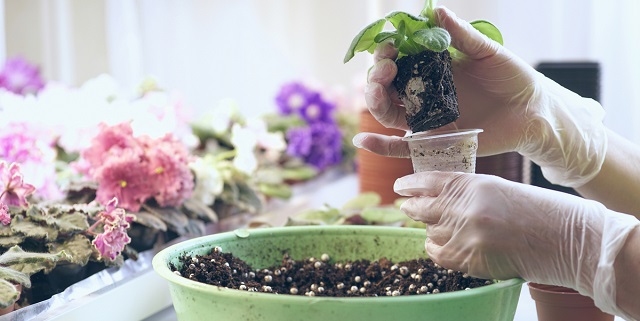It may come as a bit of a surprise to some, but you can regrow several vegetables from ordinary kitchen scraps. The cuttings from vegetables including onions, celery, and ginger root to name just a few, can all be used to grow new plants. Little effort is required to generate new plants and most can be grown indoors at any time of the year.
There are many benefits to growing fresh vegetables. Not only can you save a bit of money on your grocery bill, but you’ll also reduce the amount of waste going to the landfill. There are lots of different fruits and vegetables you can grow this way and the list that follows contains a few examples of the types of fresh fruits and vegetables you can grow with this method.
Leaf vegetables
Leaf vegetables such as celery and lettuce are easy to regrow. For instance, cut off the bottom part of a celery stalk and place it cut-side up in a shallow saucer of water. Be sure to change the water regularly and in just a few days, new roots will begin to develop. Transplant into soil and cover the roots and the base but keep the top above the soil.
To regrow romaine or iceberg lettuce, remove the bottom of the lettuce head and place in a small bowl of water. In 3 to 4 days, you’ll see new growth begin in the centre and a small head of lettuce will form within 2 weeks.
Bulb vegetables
This category includes green onions and leeks and these vegetables are very easy to start from scraps. Cut off the bulb end about 1 inch from the base taking care to keep the little roots that hang off the bulb intact. Place the cutting root-end down in a dish and add enough water to just cover the root.
Change the water frequently and once new shoots appear, transfer to a pot. Cover the roots and base with soil but leave the top uncovered to promote the fastest growth.
Root vegetables
With root vegetables such as carrots and beets, the “root” part is eaten while the leafy tops are generally discarded. However, the green tops, particularly when young, can be added to salads or as an aromatic in soups.
To regrow root vegetables leaves, just separate the leafy top from the root, but leave about half an inch of the root. Place in shallow water with the cut end in the water and fresh greens will start to appear in a few days.
Other food scraps to help your indoor garden grow
Even if not growing new plants, you can still use plant scraps and other food items as compost for your garden. Compost is a natural fertilizer that also helps reduce the need for chemical fertilizers and pesticides.
One drawback to composting is that you typically need a large compost bin to store food scraps while the material breaks down into usable organic matter. While this may be fine if you have a large backyard, it is not convenient if you have limited space or are trying your hand at indoor or rooftop gardening.
The good news is that there are many food scraps you can apply directly to the soil in your potted plants making this an ideal choice for indoor or rooftop gardeners. Here are some of the ways you can use kitchen scraps to help your indoor garden grow.
• Coffee grounds
Plants require nitrogen to help with the photosynthesis process and coffee grounds provide an abundant supply of nitrogen. You can use coffee grounds like a mulch on top of the soil by placing a half inch or so around the base of your plants to help keep them green and healthy.
• Egg shells
Plants need calcium to build strong cell walls and eggs shells are an excellent source of calcium and without sufficient calcium, plants can develop abnormal leaf shapes and poor quality vegetables. You can provide calcium to your plants by crushing egg shells and mixing directly into the soil.
A half egg shell also serves as an ideal starter pot. Fill the egg shell with soil and plant your seeds. Once the seeds germinate and sprout, you can transplant the new seedlings into larger pots.
• Orange peels
Like eggshells, you can also use a half orange peel as a starter pot for seeds. As the seedling grows, it will receive nutrients from the orange peel and you can transfer it directly to a larger pot.
Another advantage of adding orange peels to the soil is that it acts as a natural insect repellant. Insects, including aphids, don’t like the smell of citrus oils so they avoid plants that have shredded orange peel mixed in the soil.
• Banana peels
Banana peels are a natural way to add potassium to your soil. Potassium is crucial to plant growth and helps plants form strong stems and leaf growth. All you need to do is chop up banana peels and mix into the soil around potted plants.
• Raw onion and garlic ends
Onion and garlic scraps are also excellent insect repellants. Sprinkle raw tips around the bases of plants to help keep aphids and other insects at bay.




 Travel and lifestyle
Travel and lifestyle